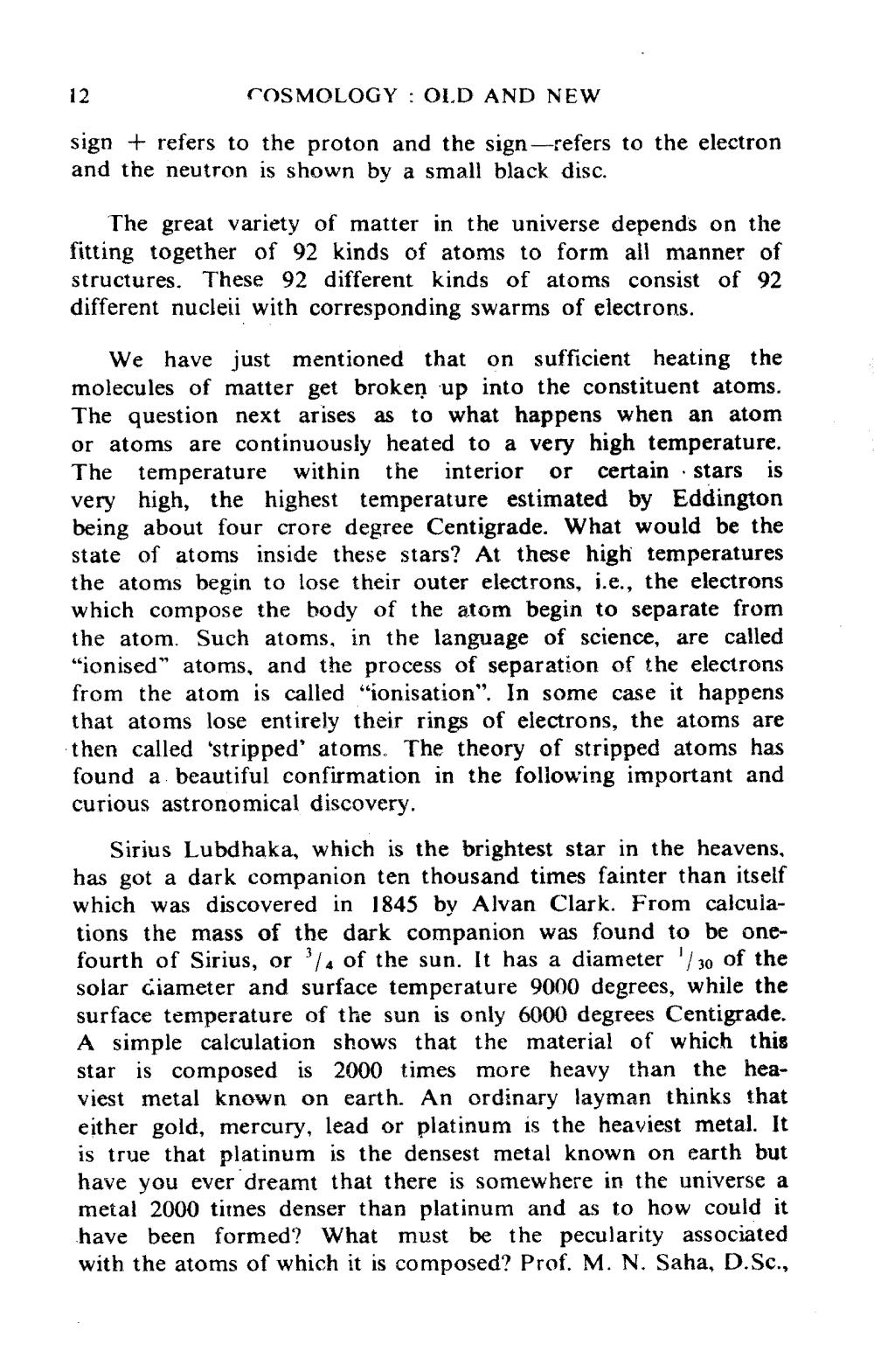________________
12
COSMOLOGY : OLD AND NEW
sign + refers to the proton and the sign-refers to the electron and the neutron is shown by a small black disc.
The great variety of matter in the universe depends on the fitting together of 92 kinds of atoms to form all manner of structures. These 92 different kinds of atoms consist of 92 different nucleii with corresponding swarms of electrons.
We have just mentioned that on sufficient heating the molecules of matter get broken up into the constituent atoms. The question next arises as to what happens when an atom or atoms are continuously heated to a very high temperature. The temperature within the interior or certain · stars is very high, the highest temperature estimated by Eddington being about four crore degree Centigrade. What would be the state of atoms inside these stars? At these high temperatures the atoms begin to lose their outer electrons, i.e., the electrons which compose the body of the atom begin to separate from the atom. Such atoms, in the language of science, are called “ionised” atoms, and the process of separation of the electrons from the atom is called “ionisation". In some case it happens that atoms lose entirely their rings of electrons, the atoms are then called 'stripped' atoms. The theory of stripped atoms has found a beautiful confirmation in the following important and curious astronomical discovery.
Sirius Lubdhaka, which is the brightest star in the heavens, has got a dark companion ten thousand times fainter than itself which was discovered in 1845 by Alvan Clark. From calculations the mass of the dark companion was found to be onefourth of Sirius, or /4 of the sun. It has a diameter ') 30 of the solar Ciameter and surface temperature 9000 degrees, while the surface temperature of the sun is only 6000 degrees Centigrade. A simple calculation shows that the material of which this star is composed is 2000 times more heavy than the heaviest metal known on earth. An ordinary layman thinks that either gold, mercury, lead or platinum is the heaviest metal. It is true that platinum is the densest metal known on earth but have you ever dreamt that there is somewhere in the universe a
2000 titnes denser than platinum and as to how could it have been formed? What must be the pecularity associated with the atoms of which it is composed? Prof. M. N. Saha, D.Sc.,




